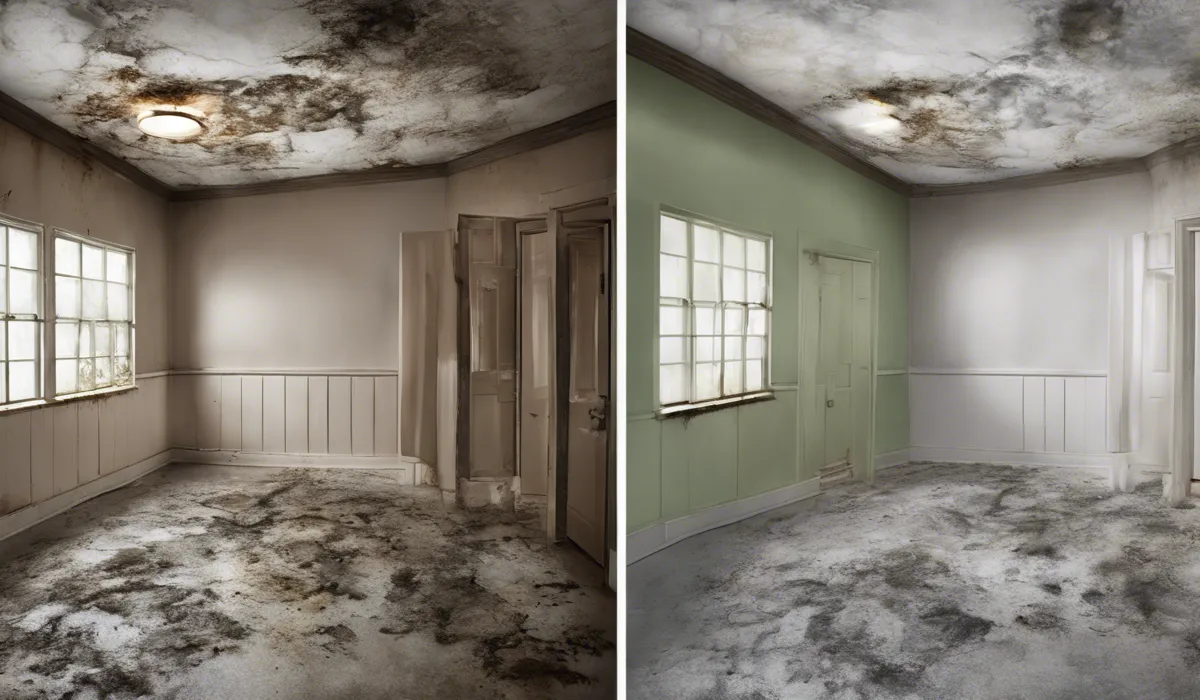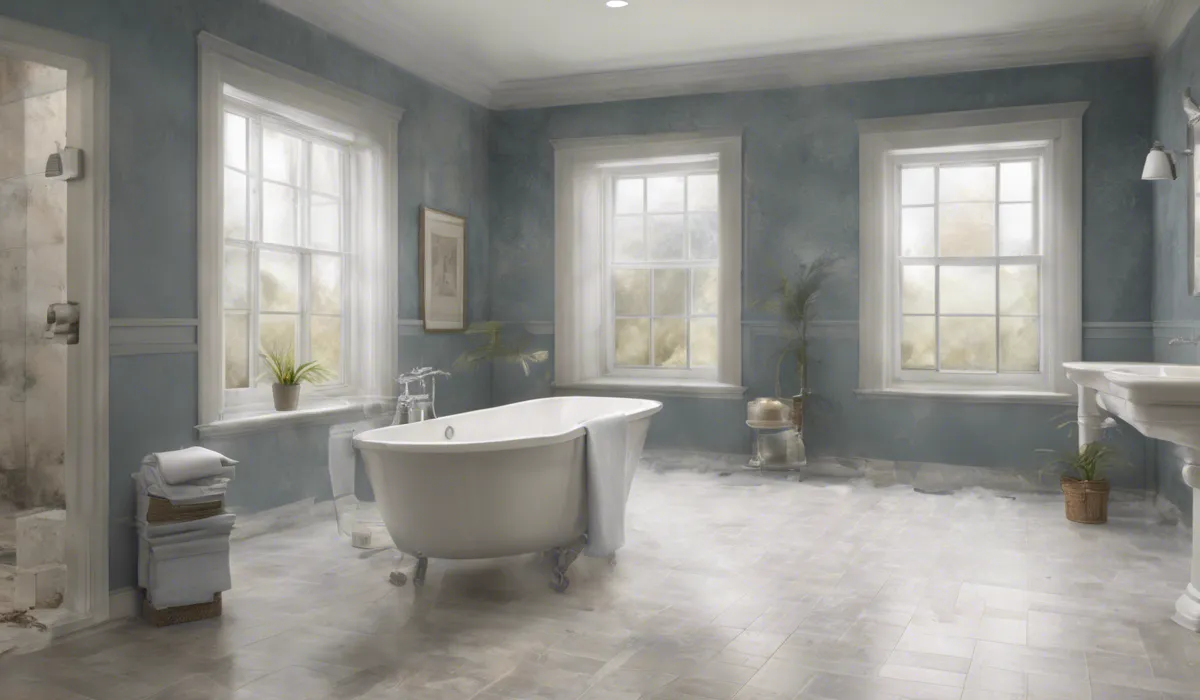Professionals remove mold by first assessing the affected area, then they wear protective gear to prevent exposure.
They use HEPA vacuums and EPA-approved fungicides to eradicate mold. Contaminated materials are safely discarded, and the area is dried to prevent recurrence.
Assessing the Mold Situation

Identifying the Extent of Mold Infestation
When professionals arrive to tackle mold, their first step is to gauge how widespread the mold problem is.
They conduct a thorough inspection to locate all areas where mold is present. This often involves checking hidden spaces such as behind walls, in attics, and under floors.
Mold can sometimes be invisible to the naked eye, so specialists might use tools like moisture meters and infrared cameras to uncover hidden mold with precision.
Understanding the Type of Mold
Next, professionals determine what type of mold they are dealing with. Not all mold is the same; some types can be more harmful than others.
Specialists often take samples of the mold to a lab for analysis. This helps them understand the risks and decide on the most effective treatment methods.
Determining the Cause of Mold Growth
Understanding why mold is growing is crucial for effective removal. Professionals look for sources of moisture, such as leaks or high humidity, that have created a favorable environment for mold to thrive.
They might recommend repairs or improvements to prevent mold from coming back.
Safety Considerations for Mold Removal Professionals
Before starting the removal process, safety is a top priority for mold removal experts. They develop a plan to remove mold without causing harm to themselves or the building’s occupants.
This involves setting up containment areas and following strict guidelines to avoid spreading mold spores during the removal process.
Mold Removal Process

Preparation and Safety Measures
Sealing Off the Affected Area
To prevent mold spores from moving to other parts of the building, professionals seal off the affected area. This is done using plastic sheeting and tape. It’s like creating a bubble around the mold that keeps the rest of the place safe.
Personal Protective Equipment (PPE)
Workers suit up in protective gear, including masks, gloves, and suits, to keep themselves safe from mold exposure. This gear is essential for their health, especially when dealing with large amounts of mold.
Cleaning and Treating the Area
HEPA Vacuuming
One of the first steps in the actual removal process is HEPA vacuuming. HEPA vacuums capture tiny mold spores that might escape during cleaning. This helps to ensure that mold doesn’t spread.
Antimicrobial Agents and Fungicides
After vacuuming, professionals apply special chemicals to kill the mold. They use EPA-approved antimicrobial agents and fungicides that are safe for the environment but tough on mold.
Removal of Contaminated Materials
Materials that are too moldy to clean, like drywall or insulation, must be removed and thrown away. Professionals dispose of these materials carefully to avoid contaminating other areas.
Drying and Preventing Future Growth
Dehumidifying the Area
After mold is removed, it’s important to dry out the area completely. Dehumidifiers help take the moisture out of the air and materials, making it harder for mold to come back.
Addressing the Source of Moisture
Finally, experts make sure that the original cause of the mold, like a leaky pipe, is fixed. This is a key step to keep mold from returning.
Post-Removal Verification and Prevention

Testing the Area to Ensure Complete Removal
After the clean-up, professionals test the area to make sure all the mold is gone. They may take air or surface samples to check that the mold levels are safe.
Recommendations for Preventing Future Mold Growth
Experts provide homeowners with advice on how to keep mold from coming back. This might include using dehumidifiers or improving ventilation in mold-prone areas like bathrooms.
Maintenance Tips for Mold-Prone Areas
Regular cleaning and maintenance can prevent mold growth. Professionals will suggest a schedule for checking and cleaning areas that tend to get moldy.
Professional Advice on Improving Indoor Air Quality
Finally, mold removal experts can give tips on improving the overall air quality in your home.
This could be as simple as using high-quality air filters in your HVAC system or as involved as installing an air purifier.
FAQs About Mold Removal Process
How do professionals initially assess mold-affected areas?
Professionals initially assess mold-affected areas by conducting a thorough examination to determine the extent of the mold growth and the level of contamination.
What kind of protective gear do mold removal experts wear?
Mold removal experts wear protective gear including gloves, masks, goggles, and sometimes full-body suits to prevent exposure to mold spores during the removal process.
What equipment is used to eradicate mold?
To eradicate mold, professionals use High-Efficiency Particulate Air (HEPA) vacuums and Environmental Protection Agency (EPA)-approved fungicides.
How are contaminated materials handled during mold removal?
Contaminated materials are safely discarded by professionals in sealed bags to prevent the spread of mold spores during the mold removal process.
What do professionals do to prevent mold from coming back?
After removing mold, professionals dry out the affected area thoroughly to ensure that moisture levels are controlled, which helps prevent the recurrence of mold.
Final Thoughts
Professionals tackle mold removal by conducting a thorough assessment and donning protective equipment.
They utilize HEPA vacuums and EPA-approved fungicides for eradication and dispose of contaminated materials responsibly. Ensuring the area is dried is crucial to prevent future mold growth, highlighting a meticulous and safety-oriented approach.
